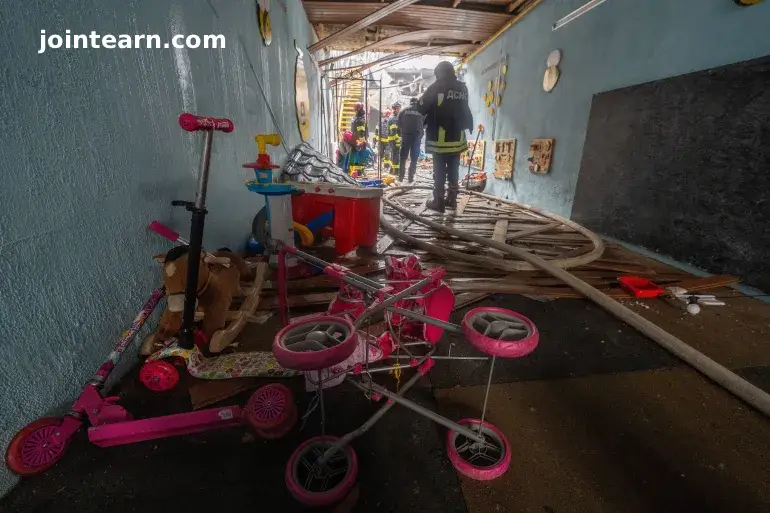
As diplomatic efforts with Russia falter, the United States, Ukraine, and the European Union are stepping up economic and military pressure on Moscow, focusing particularly on Russian energy exports. This comes amid ongoing Russian-Ukrainian hostilities, where both sides increasingly target each other’s energy infrastructure to weaken economic and military capabilities.
New Sanctions on Russian Energy
The EU is set to adopt a new round of sweeping sanctions against Russian oil and gas, following President Donald Trump’s recent sanctions targeting Moscow’s top oil companies, Rosneft and Lukoil. These measures aim to curb Russia’s ability to finance its war in Ukraine and to pressure Moscow toward peace negotiations.
Trump’s sanctions threaten foreign financial institutions dealing with Russian energy, signaling that countries continuing to purchase Moscow’s oil could face significant repercussions. EU leaders have pledged to phase out all Russian gas imports over the next year while using frozen Russian central bank assets to support Ukraine’s military procurement, including Patriot air defence systems.
Ukraine’s Strategic Energy Strikes
On the battlefield, Ukraine has increasingly targeted Russian energy infrastructure with drones and long-range missiles. Since August, Ukrainian forces have struck 58 Russian energy facilities, including refineries, gas processing plants, and storage tanks. Notable attacks include:
- Orenburg gas processing complex: Shut down after a massive explosion caused by a Ukrainian drone strike.
- Novokuibyshevsk oil refinery (Volga region): Temporarily halted crude oil processing after being hit.
- Feodosia oil terminal in Crimea: 11–19 storage tanks damaged, disrupting Russian supply chains to southern Ukraine.
These strikes have caused fuel shortages, rationing, and rising petrol prices in Russia, reducing Moscow’s war-fighting capacity and export revenue.
President Volodymyr Zelenskyy highlighted Ukraine’s long-range capabilities, emphasizing that drone and missile attacks directly diminish Russia’s economic and military potential. Ukraine has offered its drone technology and production expertise to the U.S. in exchange for Tomahawk cruise missiles, which have a 2,500 km range, far exceeding Ukraine’s current Storm Shadow missiles.
Russia’s Counterstrikes
Russia has responded with attacks on Ukraine’s electricity and coal infrastructure, including power stations in the east and multiple coal mines in Dnipropetrovsk. Between October 16–22, Russia launched 859 drones and 77 missiles, with Ukraine intercepting about three-quarters of the drones but fewer than half of the missiles.
The ongoing energy and infrastructure strikes demonstrate a growing war of attrition targeting each side’s economy, civilian utilities, and military supply chains.
Diplomatic Efforts Stall
Earlier this month, Trump proposed a ceasefire along current frontline lines, supported by Ukraine and European powers. However, Russia rejected the proposal, leaving diplomatic efforts in limbo. Trump had initially planned to meet Russian President Vladimir Putin in Budapest, but the meeting was canceled, citing repeated discussions with no tangible results.
Meanwhile, Zelenskyy continues to advocate for expanded Western military support, including air defense systems and advanced missiles, to strengthen Ukraine’s long-range strike capabilities.
Europe’s Strategic Response
European leaders are seizing the opportunity to apply economic pressure on Russia:
- The EU’s 19th sanctions package will phase out Russian gas imports and target third-party nations or companies circumventing sanctions, including Chinese entities.
- Frozen Russian assets on EU soil (estimated at €140 billion) are being allocated for Ukrainian defense purchases, supporting both European and U.S. military aid programs.
- Measures aim to limit Russia’s oil and gas revenues while bolstering Ukraine’s defenses and European energy independence.
Ukraine’s Long-Term Confidence
Despite minor territorial losses, Ukraine maintains a confident outlook, leveraging both military and economic tools to strengthen its position. Energy strikes, combined with Western sanctions, aim to erode Russia’s war potential, creating leverage for future negotiations.
Zelenskyy described recent meetings with European leaders as leading to a “strong and, in many ways, completely new agreement on our defence capabilities,” highlighting the synergy between military strategy and diplomatic pressure.


Leave a Reply